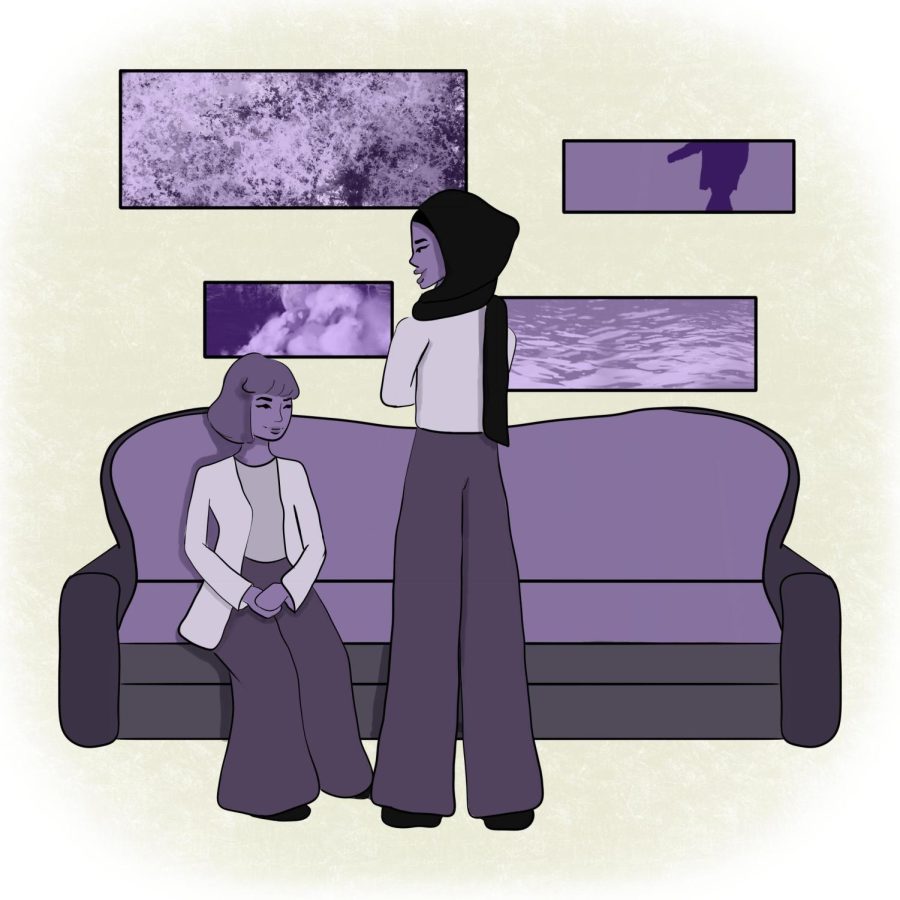Opinion | It’s time to resurrect the art salon
January 23, 2023
The year is 1923. The place is 27 rue de Fleurus. It’s a seemingly unassuming house in Paris. You almost walk right by it, unaware of the significant conversations lingering just beyond the threshold. But as you near the front door, you hear voices seeping through the cracks of the window panes, emanating softly inside. You know something is happening. Something great.
27 rue de Fleurus was the home of American poet Gertrude Stein and her partner Alice B. Toklas. The house was also the location of Stein’s infamous salon for more than 30 years. On any given night, the greatest artists, poets and authors of the time — Pablo Picasso, Ernest Hemmingway, Henri Matisse, F. Scott Fitzgerald, James Joyce and on and on — filled 27 rue de Fleurus.
But 100 years later, the art of the salon is dead and buried. By the 20th century, salons were no longer the primary gathering place for artists, and now in the 21st century the existence of the Parisian salon has faded almost entirely from cultural memory. While talking to my roommates, they confessed to having no idea what I meant when I said the word “salon.” It’s time for us to resurrect the cultural, artistic and literary gathering place. It’s time to bring back the salon.
The transition of art from private collections to public museums contributed to the decline of the salon. Art became more widely accessible to the public, stripping the private salon of its primary purpose — art collecting and showing. This publication of art is, of course, a positive societal change. All art should be accessible to everyone, and much of the reason for the invention of the independent salon was to showcase modernist artworks that the pretentious French Royal Academy of Art rejected.
Once art museums became more accepting of modernist art, private collections slowly dwindled, and along with them, the salon. While this transition did make art — modernist art, specifically — more accessible, the salon was a subversive environment that gave voice to those that the dominant culture suppressed. Women, often lesbians, ran many of the independent salons, and without them many of the famous modernist artists and authors, such as Picasso and Joyce, may not have seen the light of day.
However, the subversive salons themselves were still very exclusive. Mostly reserved for white, upper class artists and authors, the world of art still lacked the inclusivity that we see today. Since the death of the salon, conversations about art, literature and philosophy have found a home online. The advent of the internet also allowed for increased globalization and diversity of thought and art. But, even so, we should not allow the salon to become a relic of the past.
While globalization and diversity of ideas is incredibly important, the far-reaching capability of the internet can overshadow important connections to the local community. Reviving an in-person salon environment would allow local artists to discuss specific artistic concerns within their personal communities. Not to mention that after years of online interactions as a result of a global pandemic, we could all use some experience having meaningful in-person discussions with others. A salon is the perfect environment to foster the next generation of artistic and literary minds, develop communication skills and simply admire incredible art.
Of course, there are necessary changes we must make from the Parisian salons of the early 20th century. Our modern salon would still be a place to show and discuss subversive art and art still not accepted in museums, but unlike the salons of the past, it would be devoid of elitism and exclusivity. Our modern salon would mimic the diversity of thought that the internet allows us to achieve, but in an in-person environment. The goal is not simply to revive the salon, but improve upon it.
Finally, my strongest argument in favor of the resurrection of the salon — the vibes. Just imagine sitting in the hostess’ quaint Pittsburgh living room. The sun has set and the room is dim, lit only by quiet lamps and a crackling fireplace. You’re surrounded by upholstered furniture and art of the new generation. The young, great minds flit around you, murmuring in low voices about the merits of 21st century art, literature and philosophy. It’s an aesthetic nirvana. And the most influential interdisciplinary cultural revolution of our time.
It’s time for the salon to make a comeback. If anyone is willing to host the very first Salon de Anna and is in possession of such an aesthetic sitting room, my email is, as always, at the bottom of the page. I look forward to seeing you all at the salon. Come prepared to discuss art, literature, philosophy and life. Snacks will be provided but it is, obviously, BYOB. Vive la révolution culturelle.
Anna Fischer writes about female empowerment, literature and art. She’s really into bagels. Write to her at [email protected].








